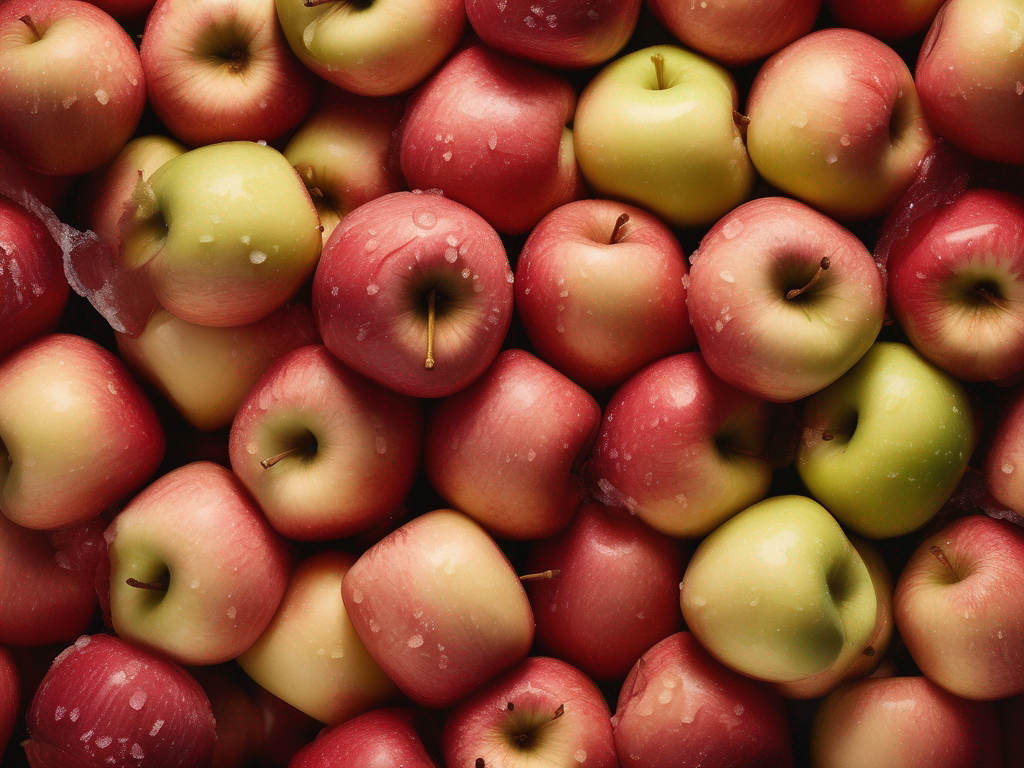
When to Discard Frozen Apples: Dealing with Mushy and Brown Apples
Get Your Free Food Safety Cheat Sheet
30 most common foods with instant answers. Print it and stick it on your fridge—completely free!
When to Discard Frozen Apples: Dealing with Mushy and Brown Apples
Frozen apples are a convenient way to preserve the fruit for later use in pies, crisps, and other baked goods. However, if you notice that your frozen apples have turned mushy and brown, it's essential to know when it's time to discard them to avoid any potential food safety issues. In this blog post, we will discuss the reasons why frozen apples may turn mushy and brown, how to determine if they are still safe to eat, and practical tips for proper storage and handling. (Frozen apples)
Why do Frozen Apples Turn Mushy and Brown?
Frozen apples can turn mushy and brown due to several factors, including:
1. Freezer Burn:
When apples are not properly stored in an airtight container or freezer bag, they can be exposed to air, leading to freezer burn. Freezer burn can cause the apples to lose moisture, resulting in a mushy texture and brown discoloration.
2. Enzymatic Browning:
Enzymatic browning occurs when enzymes in the apples react with oxygen in the air, causing them to turn brown. This natural process can also contribute to the mushy texture of the apples.
3. Prolonged Freezer Storage:
Frozen apples that have been stored in the freezer for an extended period may begin to deteriorate in quality, leading to mushiness and discoloration.
How to Determine if Frozen Apples are Safe to Eat
When assessing whether frozen apples that have turned mushy and brown are still safe to eat, consider the following factors:
1. Smell:
Check the apples for any off-putting odors. If they have a sour or fermented smell, it's best to discard them.
2. Texture:
Inspect the texture of the apples. If they are excessively mushy or slimy to the touch, they may have spoiled and should be thrown away.
3. Color:
While some browning is normal in frozen apples due to enzymatic reactions, extensive browning may indicate spoilage. Discard apples that have turned dark brown or black.
4. Taste:
If the frozen apples taste off or have a strange flavor, it's a sign that they have gone bad and should not be consumed.
Practical Tips for Proper Storage and Handling
To prevent frozen apples from turning mushy and brown prematurely, follow these tips for proper storage and handling:
1. Use Quality Apples:
Start with fresh, high-quality apples when freezing them for later use. Choose varieties that are firm and crisp, as they will hold up better in the freezer.
2. Properly Prepare Apples:
Peel, core, and slice the apples before freezing them. This preparation will make it easier to use the apples in recipes later on.
3. Use Airtight Containers:
Store the prepared apples in airtight containers or freezer bags to prevent exposure to air and reduce the risk of freezer burn.
4. Label and Date:
Label the containers with the date of freezing to keep track of how long the apples have been in the freezer. Use older apples first to maintain freshness.
5. Optimal Freezer Temperature:
Maintain a consistent freezer temperature of 0°F (-18°C) or lower to ensure the apples stay frozen properly and retain their quality.
Conclusion
In conclusion, frozen apples that have turned mushy and brown can be a sign of deterioration in quality. It's crucial to inspect the apples for any signs of spoilage before consuming them to avoid potential food safety risks. By following proper storage and handling practices, you can prolong the shelf life of frozen apples and enjoy them in various dishes without compromising on taste or texture. Remember to trust your senses and use common sense when deciding whether to discard frozen apples that have gone bad. [Frozen apples](/food/frozen apples) can be a versatile ingredient when properly stored and maintained, so make the most of them while they are still fresh and safe to eat. (Frozen apples)
Related Posts
Here are some other articles you might find helpful:
- The Ultimate Guide to Properly Storing Frozen Apples
- The Ultimate Guide to Preserving Fresh Apples Whole for Extended Freshness
- The Ultimate Guide to Preserving Fresh-Picked Apples
- Extending the Shelf Life of Opened Applesauce: Tips and Tricks
- The Ultimate Guide to Proper Storage Tips for Opened Applesauce
Authoritative Food Safety References
These agencies and university labs inform every tip and health precaution we publish.
USDA FoodKeeper – Cold Storage Guidelines
Official refrigerator, freezer, and pantry timelines maintained by the U.S. Department of Agriculture.
Visit USDA FoodKeeperFDA Produce Safety Rule & Grower Guidance
Field-to-fridge handling practices that prevent contamination of fruits, vegetables, and leafy greens.
Visit FDA Produce SafetyCDC Foodborne Illness Prevention Hub
Surveillance-backed guidance on pathogens, symptoms, and steps to reduce foodborne illness risk.
Visit CDC Food SafetyUC Davis Postharvest Technology Center
University research detailing optimal storage atmospheres for produce after harvest.
Visit UC Davis PostharvestPenn State Extension – Home Food Preservation & Safety
Peer-reviewed extension bulletins on safe canning, chilling, and reheating practices.
Visit Penn State ExtensionGet Your Free Food Safety Cheat Sheet
30 most common foods with instant answers. Print it and stick it on your fridge—completely free! Want more? Upgrade to the complete guide with 70+ foods.
Scan your food directly and get instant safety info using our AI-powered camera feature.